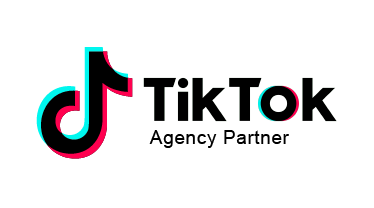What Is Emotional Targeting?
In today’s crowded digital landscape, brands are constantly searching for ways to connect with their audiences on a deeper level. One effective strategy that’s gaining traction is emotional targeting. This approach involves using emotions in advertising to influence consumer behaviour, making a brand’s message more memorable and impactful. By tapping into emotions, businesses can create affective ads that resonate with audiences, build stronger connections and drive engagement.
But what exactly is emotional targeting, and how can it benefit your brand? Let’s dive into the concept of emotional targeting, explore some examples of emotional advertising and examine how it can be used to boost marketing effectiveness.
Table of Contents
Understanding Emotional Targeting
At its core, emotional targeting is about understanding the feelings and motivations that drive consumer decisions. People are emotional beings, and research has shown that emotional responses can significantly impact how they perceive brands and make purchasing decisions. By appealing to specific emotions, marketers can shape consumer perception, build trust, and encourage action.
Emotional targeting involves creating ads that are designed to evoke feelings like happiness, nostalgia, excitement or even empathy. This approach recognises that consumers don’t make decisions solely based on logic; emotions play an important role in decision-making, often influencing people to buy products they feel a connection with rather than those that simply offer functional benefits.
How Emotions in Advertising Influence Consumer Behaviour
Studies show that emotions in advertising have a powerful impact on consumer behaviour. Ads that appeal to emotions are often more memorable, as they create a lasting impression that stays with the viewer long after the ad ends. For instance, campaigns that evoke joy, humour or nostalgia are more likely to be shared, increasing brand exposure and engagement. By understanding what drives your audience’s emotions, you can craft messages that resonate on a personal level and create a loyal customer base.
Emotional targeting can also help brands differentiate themselves from competitors. In markets with similar products, customers are more likely to choose a brand they feel connected to over a brand they perceive as purely transactional. This emotional connection builds loyalty, encourages repeat purchases and strengthens a brand’s overall reputation.
Common Types of Emotional Targeting
Emotional targeting can evoke various emotions to influence consumers. Here are some common types of affective ads used to tap into consumer emotions:
1. Happiness and Joy
Ads that evoke happiness and joy create a positive association with the brand, encouraging customers to associate these emotions with the products or services. Brands often use bright visuals, upbeat music and relatable scenarios to create a joyful experience for viewers. This approach works particularly well for lifestyle, fashion and family-oriented brands.
Example: Coca-Cola’s “Share a Coke” campaign is an iconic example of using happiness and joy in advertising. By personalising bottles with common names, Coca-Cola invited people to share a Coke with friends and family, spreading positivity and joy.
2. Nostalgia
Nostalgia is a powerful emotion that connects people to memories from the past, often evoking a sense of warmth and comfort. By appealing to nostalgia, brands can trigger positive associations and connect with consumers on a personal level. Nostalgia works well for brands with a long history or those that want to remind consumers of simpler times.
Example: Nintendo’s campaigns often use nostalgia by showcasing classic games or characters that older audiences grew up with. This approach rekindles childhood memories, creating a strong emotional connection with fans.
3. Empathy and Compassion
Ads that appeal to empathy and compassion tap into viewers’ sense of humanity. These ads often highlight social issues, personal struggles, or stories of resilience, prompting viewers to feel a connection with the characters in the ad. This type of emotional targeting is particularly effective for non-profits, healthcare and cause-driven brands.
Example: Dove’s “Real Beauty” campaign promotes body positivity and self-acceptance, showing real women rather than models. The campaign’s message resonates deeply with viewers by challenging unrealistic beauty standards and promoting self-love.
4. Fear and Urgency
Emotions like fear or urgency are often used in advertising to prompt immediate action. Fear-based ads typically highlight the risks or consequences of not taking action, creating a sense of urgency that encourages viewers to respond quickly. This approach is often seen in public service announcements, insurance ads, and health-related campaigns.
Example: Many anti-smoking campaigns use fear by showing the harmful effects of smoking on health, encouraging viewers to quit smoking. The message is impactful as it directly addresses the viewer’s fear of health risks.
How to Implement Emotional Targeting in Your Campaigns
If you’re looking to integrate emotional targeting into your marketing strategy, here are some practical steps to get started:
1. Understand Your Audience’s Emotional Triggers
Research your audience to understand the emotions that drive their decisions. What are their pain points? What makes them happy, anxious, or nostalgic? Gathering insights from surveys, social media interactions and customer feedback can help you identify the key emotions to target.
2. Craft Emotionally Resonant Stories
Stories are an effective way to bring emotional targeting to life. Instead of focusing solely on product features, create narratives that resonate emotionally with your audience. Use real-life scenarios, relatable characters, and storytelling elements that evoke the desired emotions. Crafting compelling stories around your brand allows customers to connect with it on a deeper level.
3. Use Visuals and Music to Amplify Emotions
Visual elements like colours, lighting and facial expressions play a significant role in evoking emotions. Warm colours can evoke happiness, while darker tones can suggest seriousness or urgency. Additionally, background music can amplify emotions; upbeat tunes can create excitement, while soft music can evoke nostalgia or empathy.
4. Measure Emotional Impact
Use analytics tools to track the success of your emotionally targeted campaigns. Metrics like engagement rates, shares and time spent on a page can provide insights into how well your audience resonates with the content. If possible, use A/B testing to try different emotional appeals and see which ones are more effective.
Emotional Advertising Examples: Brands That Do It Right
Let’s look at some notable emotional advertising examples that highlight the power of emotional targeting:
- Apple: Apple’s ads often focus on empowerment, showing how its products enable people to express their creativity and fulfil their potential. By evoking feelings of pride and ambition, Apple encourages customers to see the brand as part of their personal journey.
- Nike: Known for its inspirational ads, Nike frequently uses motivation and courage as key emotions. Their “Just Do It” campaign encourages viewers to push beyond their limits, resonating with those who value resilience and perseverance.
- John Lewis: The British retailer is famous for its emotionally charged Christmas adverts, which often feature themes of love, friendship and family. By evoking joy and warmth, John Lewis strengthens its brand image and builds loyalty among holiday shoppers.
Harnessing the Power of Emotional Targeting
Emotional targeting isn’t just a trend; it’s a powerful tool that enables brands to build lasting relationships with their audience. By understanding what makes your audience tick and using emotions in advertising thoughtfully, you can create affective ads that leave a lasting impression, encourage engagement and inspire loyalty.
If you’re ready to connect with your customers on a deeper level, emotional targeting may be the missing link in your marketing strategy. As a top digital marketing agency in Malaysia, we specialise in helping brands craft emotionally resonant campaigns that drive results. Let us guide you in leveraging the power of emotional targeting to make a lasting impact on your audience.










Join the discussion - 0 Comment